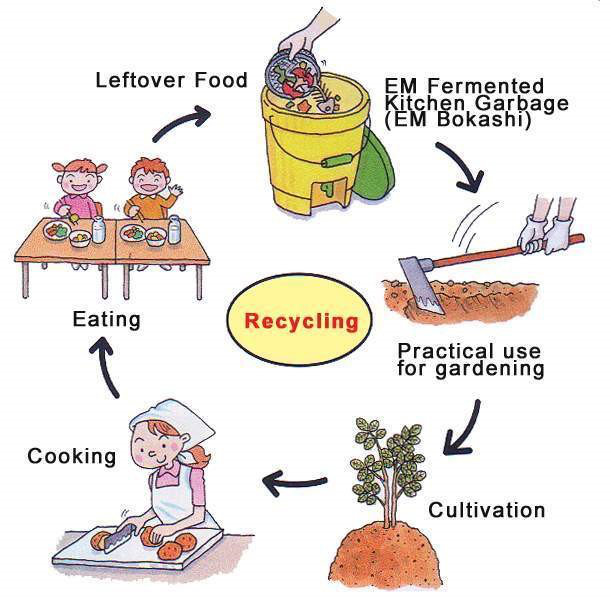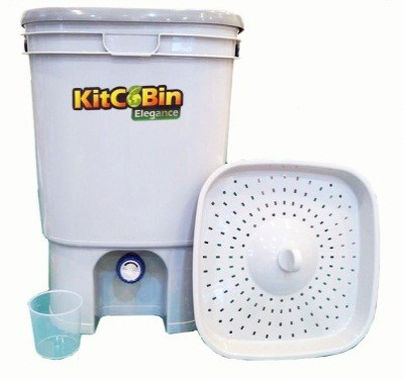EM for Composting
WHY WE NEED TO USE EM IN COMPOSTING
Composting is an environmentally conscious method of creating organic fertilisers out of organic wastes. At present, the fundamental challenge for composting is in properly aerating the piles, which is labour intensive and therefore expensive. Using conventional composting methods, piles must be turned frequently or they risk becoming putrefying, which produces foul smelling gases such as ammonia and mercaptans, attracts numerous flies, and yields potentially disease-inducing product.
The addition of EM•1 can help to overcome these challenges by eliminating the odour and establish beneficial microbial growth by preventing the anaerobic pockets from putrefying. When carefully managed, EM•1 has the potential to reduce the frequency of turning the piles, saving both time and money.
Food Waste
Using EM™ you can recycle food waste to make valuable fertilizer for your gardens and plants. EM™ helps to speed up the natural composting process — without the negative side-effects of foul odours and pests. Adding compost to the soil and then mulching it will help to hold in moisture, requiring less watering, keep weeds down, and provide a home for worms and microbes.
The benefits of using EM made food waste compost include:
-
EM compost enhances decomposition and produces nutrient-rich soil humus, perfect for enhancing the garden
-
Reduces odour for undetectable indoor composting
-
Significantly reduces disease-producing pathogens resulting from compost putrefaction
-
Produces nutrient-rich compost
-
Increases beneficial microbial activity in the soil, therefore enhances better root development
-
Enhances resistance of plants to stress and reduces soil borne pathogens
-
Safe and environment friendly as it is organic and biodegradable.
DIRECTIONS IN MAKING EM FOODWASTE COMPOST.
-
Sprinkle a small amount of EM Bokashi on the bottom of Composting Bin.
-
The food waste is break into small pieces to ease the breakdown process.
-
Food waste is in well drained condition. Not wet.
-
Every time food waste is added, EM Bokashi is added as well.
-
Push down the food waste and bokashi to make it compact.
-
Close the lid tightly to prevent contamination.
-
Drained the Food waste juice collected frequently. Can be dilute (1:500) and use to waters plant or Pour into the drain to release EM into the environment. Do not keep the juice collected-Must be use immediately.
-
After the bucket is full, let it sit, tightly closed, for at least one week to ferment. (Allowing it to sit longer is fine, but makes sure the materials are not too moist to cause rotting and odor.)
-
After fermenting, bury the contents and cover with at least 8 inches of soil so as not to attract animals.
-
After another two weeks, you can plant directly into the soil.

Points to note:
-
Check to make sure the lid is always closed tightly. When air enters during the fermentation stage, unwanted microbes can enter and begin putrefying the food waste.
-
White mold is good. This is beneficial fungus that helps produce antibiotics (to suppress pathogens) and antioxidants. This fungus will also help with water retention in the soil.
-
Green or Black mold are not good. These are putrefying fungus and are usually the result of air infiltration, excess moisture, and/or not enough EM Bokashi.




 Malaysia
Malaysia